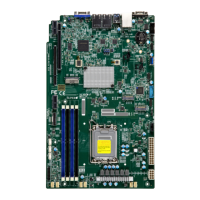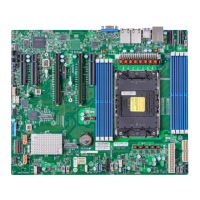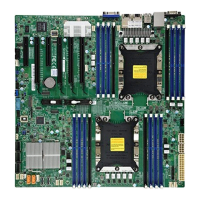15
Chapter 1: Introduction
Motherboard Features
Peripheral Devices
•
Two USB 2.0 ports on the back I/O panel (USB0/1)
• Two USB 3.2 Gen 2 x1 ports on the back I/O panel (USB6/7)
• Two front accessible USB 2.0 headers with two USB connections each (USB2/3, USB4/5)
• One front accessible USB 3.2 Gen 1 x1 header with two USB connections (USB9/10)
• One USB 3.2 Gen 2 x1 Type-A header (USB8)
BIOS
•
256Mb AMI BIOS
®
SPI Flash BIOS
• ACPI 6.0 or later, PCI F/W 3.0 or later, Plug and Play (PnP), SPI dual speed support, riser card auto detection support,
SMBIOS 2.7 or later, real time clock (RTC) wakeup
Power Management
•
ACPI power management
• Power button override mechanism
• Power-on mode for AC power recovery
• Power supply monitoring
System Health Monitoring
•
Onboard voltage monitoring for +3.3 V, +5 V, +12 V, +3.3 V Stby, +5 VStby, Vcore, Vmem, CPU temperature, PCH
temperature, system temperature, memory temperature, and peripheral temperature
• 6 CPU switch phase voltage regulator
• CPU thermal trip support
• Platform Environment Control Interface (PECI)/TSI
Fan Control
•
Fan status monitoring via IPMI connections
• Single cooling zone
• Multi-fan speed control support through onboard BMC
• Six 4-pin fan headers
System Management
•
Trusted Platform Module (TPM) support
• Watchdog
• Chassis intrusion header and detection
• Server Platform Service
LED Indicators
•
CPU/system overheat LED
• Power/suspend-state indicator LED
• Fan failed LED
• UID/remote UID
• HDD activity LED
• LAN activity LED
Notes: The table above is continued on the next page.

